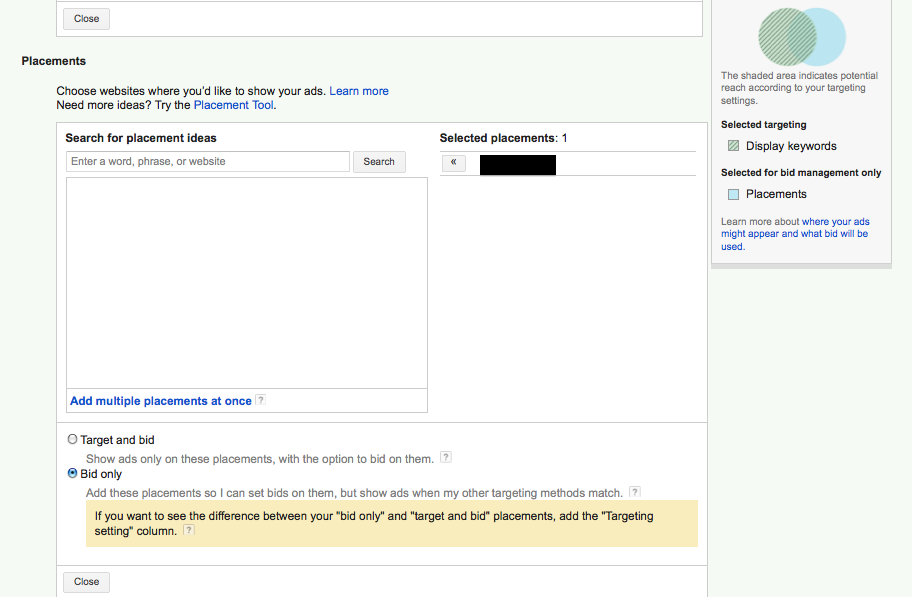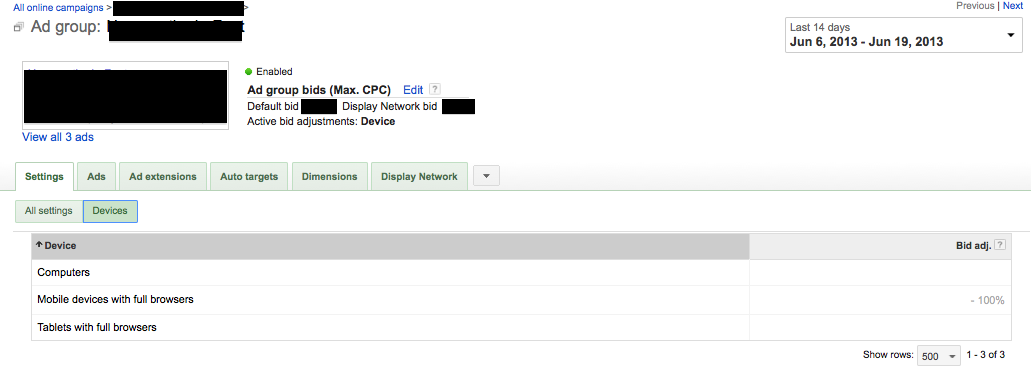Revisiting Display Targeting One Year Later

For this month’s series on PPC Hero, we’re taking a look back through our archives and revisiting some ideas we’ve talked about in the past and how the past year or more has changed our thinking about them. Things are always changing in PPC, and our views and opinions about it are no exception.
For this month’s series post I knew I wanted to talk about the Display Network, so I dug through my old articles and found one from almost a year ago about flexible targeting. See, back in July of 2012, your targeting options for Display looked like this:
This AdWords blog, announcing flexible targeting for Display, came out almost exactly a year ago. My reaction at the time, which is what that blog post I linked to was all about, was that I’ll forever do what I was doing, which was splitting all my different targeting out into their own campaigns. I was all “pffft, Google is such a dummy. Who would want to do that?”
So, much like Ygritte tells Jon Snow: “You know nothing…”
Now, a year later, there’s been SO MUCH change in the Display Network, and we know SO MUCH more. Enhanced campaigns have brought us bid modifiers at the ad group level! Not being able to control things at the ad group level was one of my big gripes about not breaking targeting methods into their own campaigns a year ago. Just the set-up of Display targeting is way more advanced now. Check out what it currently looks like:
Broad reach is now like “Bid Only” and specific reach is like “Target and Bid.” Plus, you get a fancy schmancy Venn diagram! This really allows you to see what you’re targeting as you play with the different settings for targeting. This screenshot, for example, is from an ad group that uses both placement and keyword targeting. So, the Venn diagram shows that it’s always bidding on keywords and it’s only bidding on placements when it matches keywords.
So, what’s changed my opinion since last year? Well, there is now device control at the ad group level with enhanced campaigns!
So that’s awesome! Compared to last year, now you have more control at the ad group level, most definitely. However, you still lack control for budgets at the ad group level. It really depends on what your strategy is, but I feel more open to having more diverse ad groups and not splitting stuff out into its own campaigns as much. I would still highly recommend keeping similar targeting in its own campaign just for budget control, however. Or, at the least, all targeting with similar objectives.
For example, let’s say you want one Display ad group that utilizes topics, placements, and keywords to collect email addresses through a small lead form in order to grow your email newsletter list. While all of these targeting methods vary, they all have the same objective. This could allow you to house them under the same budget since you know you have some flexibility with the targeting as shown in the screen cap above. If one targeting method isn’t working well, you can lower bids on that specific targeting method. It you have it enabled to “bid only,” then you can control the bid on that targeting method while still allowing the bids on your other targeting methods to continue on unaffected.
Let’s say you want another Display ad group that utilizes an interest category, placements, and keywords in an effort to gain actual sales. This is a different objective, and will mostly likely have a much lower return than the lead generation ad group. You’ll still be able to control all the bids on all the targeting methods like the previous ad group, and still be able to control the device bid modifiers. However, there is a really good chance that you’ll want to separate the budgets between these two ad groups. You’ll likely either have a small budget for lead generation for your newsletter since it’s not making you real-time dollars, or your sales-oriented campaign will have really awful conversion rates and you’ll want to limit its spend.
So, while we’ve come a long way in terms of control at the ad group level, until we get budget control there as well–we can’t completely integrate Display efforts. However, I’ve personally had to build way fewer campaigns with all the changes that have happened over the past year, and it’s been great for account organizations and management!





